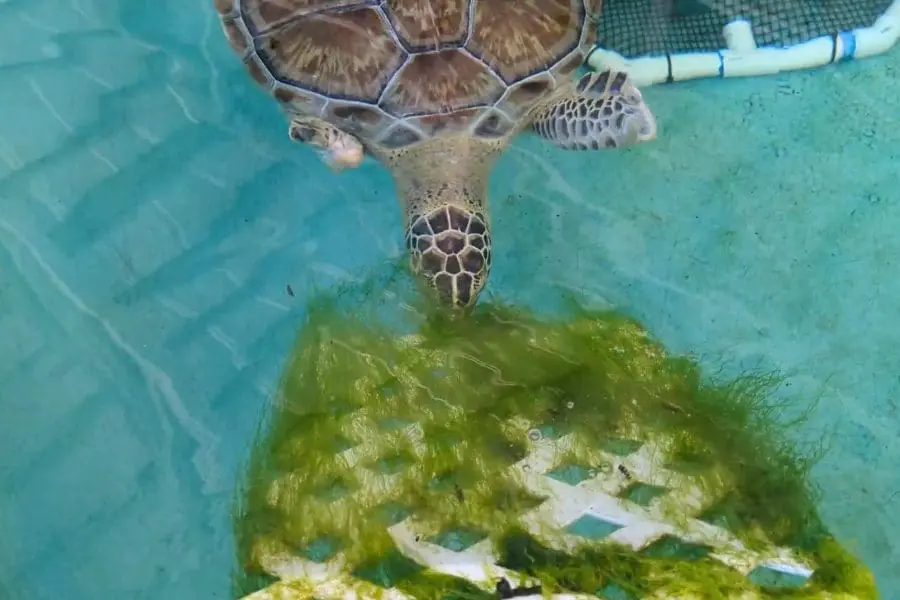

Diet is so important to the health of all our animal residents, especially patients at our Sea Turtle Healing Center.
At our Sea Turtle Healing Center, a dedicated team of staff and volunteers cares for sick and injured sea turtles with the goal of releasing them back into their natural range. Rehabilitating an endangered species is no easy feat, but our amazing team is up for the task! They are always coming up with new, innovative ways to get our patients back to health while making their time with us as comfortable as possible. The newest feat that our turtle team has taken on: Growing algae!
Our sea turtle patients are offered a variety of food based on their size, species and health. Every patient is fed twice daily – once in the morning and once in the afternoon. Their diets include everything from fish, squid, clams and shrimp to romaine lettuce and green or red algae. This food has been typically shipped to us using outside, trusted vendors like FAU Harbor Branch Oceanographic Institute, but our Healing Center staff are beginning to grow part of that diet onsite!
“When sea turtles are first admitted to us, they sometimes have a hard time transitioning to what we feed them in rehab,” said Healing Center coordinator and veterinary nurse Jess Patterson. “The opportunity to offer them a food source that is more natural to them like algae can help that transition and prevent anorexia of the patients.”
Jess and her team are growing Ulva lactuca, or sea lettuce. “It’s a hardy species, so it’s been easy to propagate so far,” she said. Although we still order algae from an outside source when we need a certain type or large quantities, having some onsite has made a big difference for our patients and staff alike.
Having access to algae at all times is crucial in sea turtle rehab, especially because patients can arrive at any time with any number of illnesses or injuries. Just like us humans, sea turtles can be picky eaters! According to Jess, around 50% of our patients will eat sea lettuce upon intake. Eventually, she plans to grow another algae species, gracilaria, to give our picky eaters more menu options.
Jess notes that when starting a new tank to grow algae, there is a process of seeding the system that must happen to encourage the growth of good bacteria and start the nitrogen cycle. Once the cycle is complete, Jess monitors the water parameters to ensure they are balanced before adding algae. She continues to watch water parameters and do basic maintenance like giving the tank supplements (algae vitamins!). Now that the tank is more established, the care is mostly hands off.
Diet is so important for all our animal residents, especially for our sea turtle patients in recovery. We’re proud to be able to offer them food grown in-house. Algae is full of good vitamins and fatty acids – perfect for sea turtles. It’s even consumed by people because of its health benefits!
Have you found a sea turtle that needs help? Visit this page or call the Sea Turtle Preservation Society at 321-206-0646.
Want to help the Sea Turtle Healing Center? Support our Zoo, or view our Healing Center’s wishlist.
